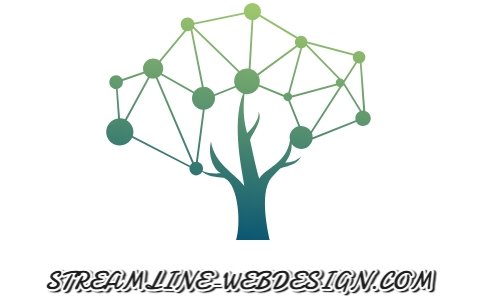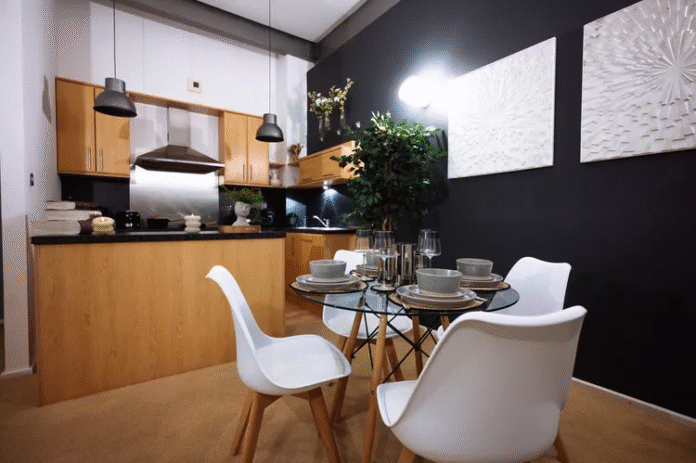
In the fast-paced world of design, there are moments when you face a creative challenge: you’ve got a project but not enough strong visual elements to make it shine. It’s in these situations that designers need to think outside the box, stretching their creativity to craft engaging, effective designs. This month’s design trend roundup offers insights into three creative techniques that help designers work around limited visuals while still capturing the attention of users. These trends are not only practical but also full of potential for any designer looking to create something unique and captivating.
1. Typography-Centered Homepages: Let Your Words Speak
When your visual resources are limited, typography becomes your best friend. Strong, creative typography can turn a simple homepage into a statement. It’s a design tool that, when used effectively, can instantly communicate your brand’s message and captivate the user. Whether it’s large, bold text or playful, quirky fonts, typography allows designers to make a significant impact without relying on complex imagery or videos.
However, the challenge lies in ensuring that your typography works seamlessly across different devices. Responsiveness is key. It’s not just about making sure the text is readable but also ensuring that it retains its impact and style, whether viewed on a phone, tablet, or desktop. A well-designed typographic homepage can make the purpose of the site clear at a glance, reducing confusion for the user.
Take Stellare, for instance. The homepage uses a clever play on words combined with a motion effect that immediately grabs your attention. The beauty of this design is its simplicity—there’s no need for a complex video or image in the background. The text itself tells the story, and the user doesn’t have to guess what the website is about.
Similarly, Engagency uses contrasting typography with a dark background and a bright, gradient-colored word to highlight a key message. Terra takes a minimalistic approach, focusing on whitespace to allow the text to breathe and stand out. The simplicity and clarity in these designs show how impactful typography can be when used thoughtfully and creatively.
2. The Art of Overlapping Elements: Breaking the Boundaries
When you don’t have a standout visual, overlapping elements can help create depth and interest. This technique allows design elements—whether text, images, or animations—to intrude upon each other’s space, giving the design a layered, dynamic feel. The overlapping technique is particularly effective in creating visual tension and interest, even with minimal content.
However, using overlapping elements requires a fine balance. The key is to ensure that the design doesn’t become too cluttered or difficult to navigate. The aim is to create contrast and harmony, not chaos. The design should still prioritize readability and clarity, ensuring important information is not obscured.
For example, Cresci’s homepage design utilizes a stunning overprint effect, making text appear as though it’s merging in and out of the background. The oversized text and textured visuals create an engaging experience for the user, drawing them into the site.
Christina Hohner takes a similar approach, overlapping text with images to emphasize the different aspects of her work. This technique highlights multiple features of the business in one glance, allowing the user to quickly understand what the website is all about.
Pudding Studio, on the other hand, uses a quirky animation combined with a bold typeface to intrigue visitors. The playful design captures attention immediately and leaves a memorable impression.
3. Showcasing AI Without the Robots: Subtle Tech-Inspired Design
One of the more unique trends emerging in 2024 is how designers are depicting artificial intelligence (AI) in their work. Traditionally, AI has been represented by robotic figures or text-heavy, futuristic designs. But now, the trend is shifting towards more subtle, high-tech visuals that hint at AI without showing it outright.
This change in approach presents a challenge: how do you convey the concept of AI in a way that feels fresh and engaging, yet doesn’t rely on the obvious symbols of technology? The answer lies in using minimalistic, abstract representations that suggest intelligence, without the need for a literal “face” or “robot” to communicate the concept.
For example, OpenCall.ai uses a simple animation that resembles a soundwave, subtly alluding to AI technology. The lack of complex imagery works because there are plenty of descriptive words and context around the animation, helping users understand the technology without the need for a visual overload.
Similarly, Walbi employs two clever design techniques to represent AI: text treatments on certain letters and a pulsing green element, which is becoming a visual shorthand for AI “thinking” or processing. This combination of text and animation effectively communicates the presence of AI without needing to resort to traditional imagery.
Apple’s “Apple Intelligence” page takes a more straightforward approach, showcasing how AI works behind the scenes in its iOS devices. While it doesn’t directly show AI as a robot or character, it uses elements like smooth animations and familiar interfaces to show how AI seamlessly integrates into the user experience.
Conclusion: Design Thinking for the Future
In October 2024, design trends are showing us that it’s possible to create powerful, engaging websites and experiences even when the visual elements are sparse or challenging. Whether it’s through bold typography, overlapping design elements, or abstract representations of technology, these trends demonstrate the importance of creativity in overcoming limitations.
For designers, these trends offer valuable insights into how to approach projects that might seem difficult at first glance. The key is to focus on the emotional and conceptual connections you want to create with your audience. By embracing these techniques, you can transform even the simplest design into something memorable and impactful.
As we move forward into 2025, the emphasis will be on how to think beyond traditional design norms, embracing the unexpected, and creating experiences that resonate deeply with users. Whether it’s conveying a sense of wonder through text, creating depth through layered elements, or subtly introducing new technology, these trends show that creativity has no bounds—even when the visuals are minimal.










